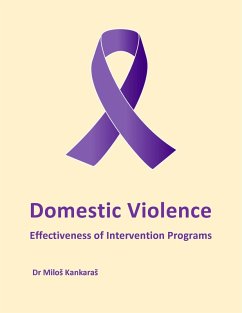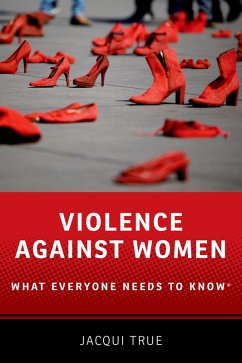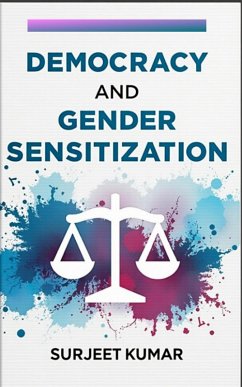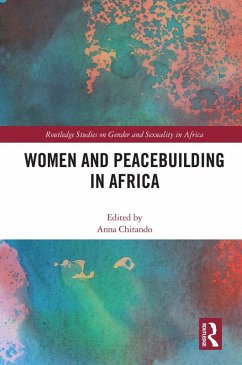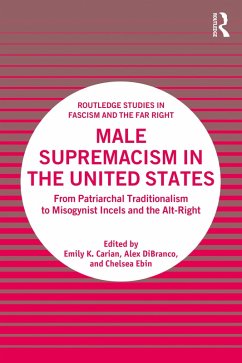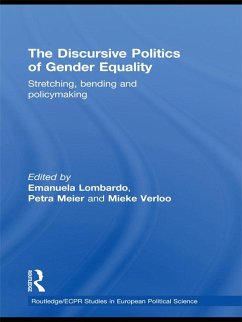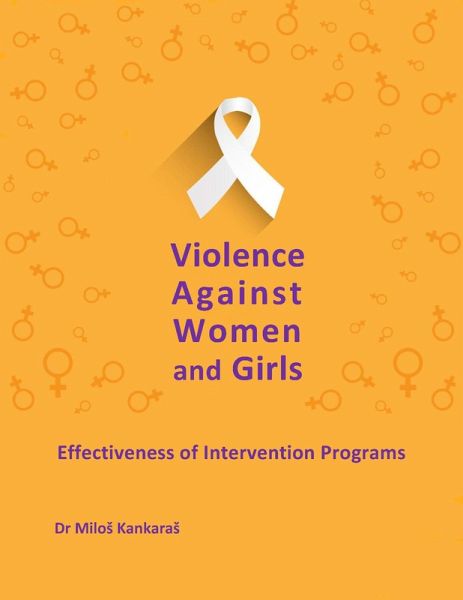
Violence Against Women and Girls: Effectiveness of Intervention Programs (Gender Equality, #3) (eBook, ePUB)

PAYBACK Punkte
0 °P sammeln!
The widespread prevalence of physical, sexual and psychological abuse and violence that affect many women and girls was a largely overlooked topic of policy interest for a long time. Fortunately, this has started to change over the last two decades after a consistent effort of women-rights and aligned non-governmental groups at local, national and international levels.With the attention of policymakers on the issue now largely secured, what is needed is a collection of solid empirical evidence on the effectiveness of various intervention programs that aim to reduce, eliminate or prevent violen...
The widespread prevalence of physical, sexual and psychological abuse and violence that affect many women and girls was a largely overlooked topic of policy interest for a long time. Fortunately, this has started to change over the last two decades after a consistent effort of women-rights and aligned non-governmental groups at local, national and international levels.
With the attention of policymakers on the issue now largely secured, what is needed is a collection of solid empirical evidence on the effectiveness of various intervention programs that aim to reduce, eliminate or prevent violence against women and girls (VAWG). Such empirical evidence would help inform and guide the formulation and implementation of effective support programs, policy actions and prevention strategies.
Unfortunately, until recently, most empirical research on this topic was based on anecdotal accounts or exploratory studies administered on non-representative samples. However, the situation is gradually improving in recent years with the administration of a growing number of empirical studies on issues related to violence against women and girls (VAWG). Some of these studies have also evaluated their impact, offering clues about the effectiveness of various intervention approaches in preventing different forms of VAWG.
This book aims to overview and synthesise existing empirical evidence from impact assessment studies that have evaluated intervention programs in the area of VAWG. Namely, this report tries to answer "what works" and "what doesn't work" in VAWG interventions, but also "what is still unknown" regarding the effectiveness of such interventions. The evidence is collected from both high-income and low- and middle-income countries and includes findings across different types of VAWG and intervention approaches.
With the attention of policymakers on the issue now largely secured, what is needed is a collection of solid empirical evidence on the effectiveness of various intervention programs that aim to reduce, eliminate or prevent violence against women and girls (VAWG). Such empirical evidence would help inform and guide the formulation and implementation of effective support programs, policy actions and prevention strategies.
Unfortunately, until recently, most empirical research on this topic was based on anecdotal accounts or exploratory studies administered on non-representative samples. However, the situation is gradually improving in recent years with the administration of a growing number of empirical studies on issues related to violence against women and girls (VAWG). Some of these studies have also evaluated their impact, offering clues about the effectiveness of various intervention approaches in preventing different forms of VAWG.
This book aims to overview and synthesise existing empirical evidence from impact assessment studies that have evaluated intervention programs in the area of VAWG. Namely, this report tries to answer "what works" and "what doesn't work" in VAWG interventions, but also "what is still unknown" regarding the effectiveness of such interventions. The evidence is collected from both high-income and low- and middle-income countries and includes findings across different types of VAWG and intervention approaches.
Dieser Download kann aus rechtlichen Gründen nur mit Rechnungsadresse in A, B, CY, CZ, D, DK, EW, E, FIN, F, GR, H, IRL, I, LT, L, LR, M, NL, PL, P, R, S, SLO, SK ausgeliefert werden.




